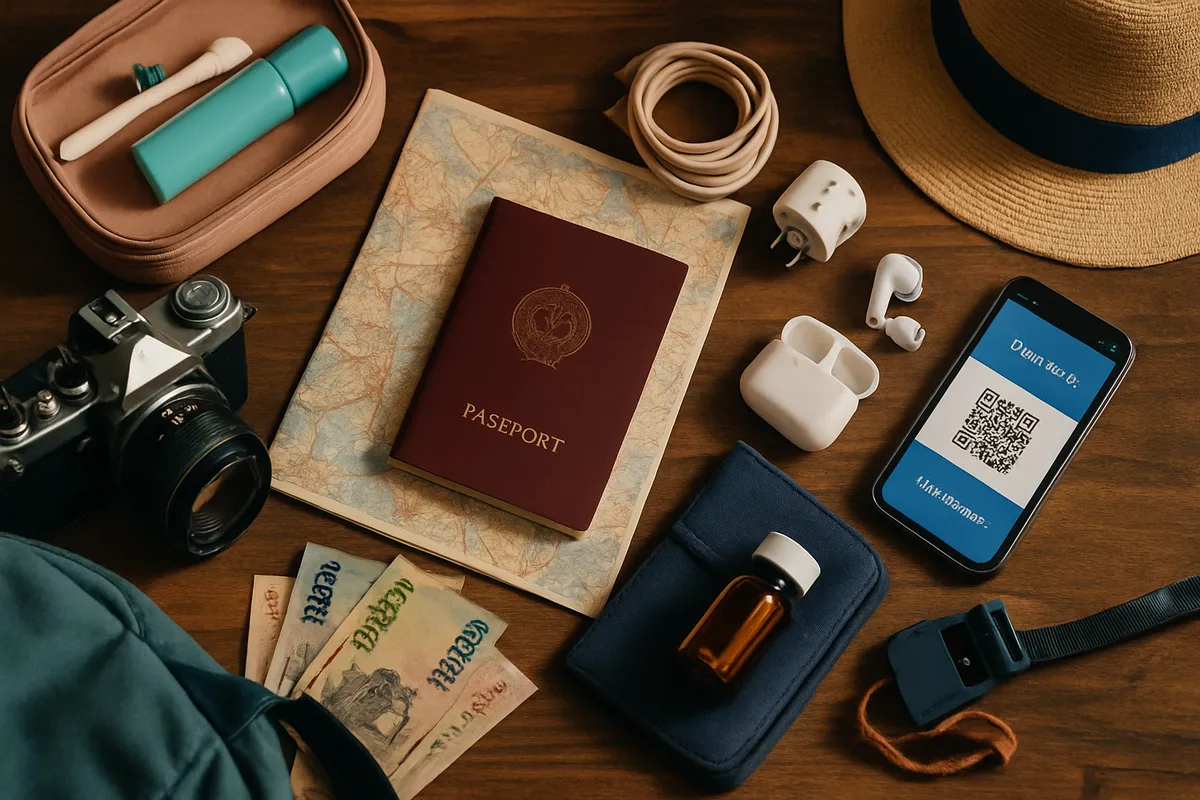Checklist for foreign Travel, accurate to every centimeter
- Tuesday, Apr 22, 2025, 20:09 (GMT+7)
Checklist for foreign Travel, accurate to every centimeter
Under the soft glow of a lamp on the night before departure, the suitcase lies wide open in the middle of the room like a maze yet to be solved. The passport rests on top, clothes piled high, but the heart flutters restlessly, not unlike a child heading off on their very first adventure. Traveling abroad always makes the heart beat a little faster—not just from the excitement of exploring unfamiliar lands, but also from the nagging fear of forgetting something essential. Do I need to declare anything? Should I buy a SIM card now or later? How much currency should I exchange? And dear God, what if I forget the power adapter?
Long before the landscapes of a foreign land appear on Instagram or the word “boarding” echoes through the airport gate, there’s an entire world that goes mostly unspoken—the world of scribbled notes and overlooked items that can make or break the whole trip. Preparing for an overseas journey is more than just stuffing things into a suitcase. It’s a tiny ritual of readiness, a quiet connection with the world that begins from within.
Visa and passport—these are the main characters. A passport valid for at least six months from your arrival date is the international rule that’s surprisingly easy to forget. If a visa is required, apply for it early to avoid the anxiety of counting down days for embassy results. Always carry printed copies of your passport and visa, keep them in a separate pocket, or upload them to your email or cloud storage. Some have lost their entire Bali vacation because they left their passport in their shorts pocket—then jumped into the sea.
Flights and hotel bookings might sound straightforward, but how many travelers have landed only to realize they booked the wrong time zone or forgot to check in online, ending up in airport queues that feel endless? A simple travel hack seasoned explorers swear by: save all tickets, booking codes, offline maps, and emergency contacts in a dedicated folder—both digital and printed. When your phone dies in a foreign city, a crumpled sheet of paper can feel like a lifeline.
Currency and bank cards are another hidden trap. Not all countries have easy-access ATMs, and not every card swipes smoothly. The smart move? Exchange a small amount of local currency at home—just enough to get you through the first day or two. Then use a contactless international card or withdraw from reputable ATMs, choosing to be charged in the local currency to avoid double conversion fees. And if you come across a shady little exchange booth offering suspiciously good rates, walk away—curiosity could cost you.
Mobile data and internet access are your modern-day compass. Traveling without Wi-Fi is like going to the beach without swimwear. Each country has its own quirks with tourist SIM cards—some sell them right at the airport, others require pre-registration. Many now opt for eSIMs for their convenience, but make sure your device supports it. If traveling in a group, consider renting a pocket Wi-Fi—it’s cost-effective and keeps everyone connected wherever you go.
Personal items might seem minor but often cause the biggest headaches. Power adapters are the most frequently forgotten item, yet they’re just as important as your passport. A toothbrush or a pair of slippers can make you feel at home even in a foreign city. And if you're headed somewhere cold, don’t trust the sunny photos you saw on Google—always pack a light jacket, whether it’s Thailand or Singapore.
Health is one aspect people tend to overlook but is absolutely crucial. A strip of stomach medicine, a fever patch, or basic allergy pills should always go in your carry-on. If you have chronic conditions, bring a prescription in English to avoid issues during airport checks or hotel stays. People have actually been denied boarding for carrying medication without proper documentation—it sounds like a movie plot, but it happens in real life more than you’d think.
Travel outfits might seem like a style choice, but they often tie directly to cultural norms. Some temples don’t allow short skirts. Some sacred places require head coverings. Packing a modest outfit, comfortable shoes, and a light jacket ensures you’re ready for sudden rainstorms, sweltering heat, or spontaneous museum visits and night markets.
Also, a little knowledge about your destination goes a long way—basic local greetings, cultural taboos, tipping etiquette, or how to hail a safe taxi. A smooth journey isn’t about knowing everything—it’s about preparing enough to adapt when things go off script.
And finally, ask yourself: “If I had no internet, no Google, could I survive abroad right now?” If that question makes you hesitate, maybe there’s something else that still needs to go into your mental suitcase. Going abroad isn’t about posting a perfect picture or checking in at a famous spot. It’s about returning with stories no one else can tell for you.
So, before the airplane lifts you into another sky, give yourself the gift of readiness—as a form of self-love. Because when you’re prepared, the world no longer feels intimidating. It simply becomes a place waiting for you to arrive, with open arms and a thousand untold wonders.

 CHECKIN.VN
CHECKIN.VN








Share on